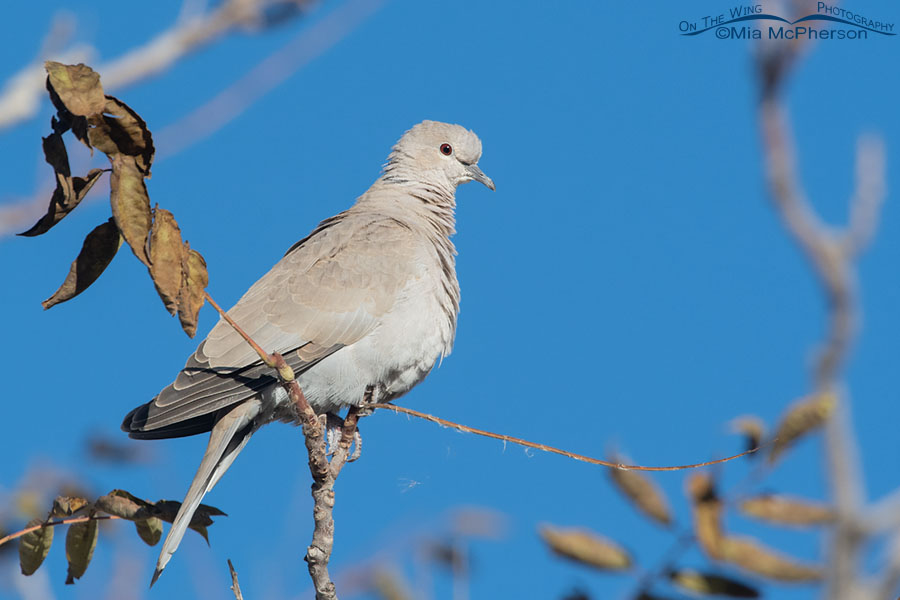 Immature Eurasian Collared-Dove perched in a tree – Nikon D500, f7.1, 1/1600, ISO 640, +1.0 EV, Nikkor 500mm VR with 1.4x TC, natural light
Immature Eurasian Collared-Dove perched in a tree – Nikon D500, f7.1, 1/1600, ISO 640, +1.0 EV, Nikkor 500mm VR with 1.4x TC, natural light
I photographed this Eurasian Collared-Dove last week at Farmington Bay and noticed that it didn’t have the dark collar usually seen on this species. I didn’t think much about it at the time but when I came home and reviewed my images of the dove I reached for my second edition of the Sibley Guide to Birds to read more about this species. Juvenile and immature Eurasian Collared-Dove are shown in the guide as not having the dark collar which gives this species its common name. This young dove will likely get its collar soon and may have hatched not that long ago because this species can have multiple broods during their breeding season.
I would highly recommend Sibley’s guide books to anyone who is interested in birds and bird identification. I have the first edition, second edition and the smaller Sibley Birds West: Field Guide to Birds of Western North America. I have put all of these guides to good use and they are suitable for beginning birders and bird photographers.
When I first moved to Utah I saw very few Eurasian Collared-Doves but now I see them in many locations and sometimes in large numbers. These doves are a nonnative introduced species that have spread rapidly across North America. I find this species at home, in urban settings, in marshes, agricultural areas, ranchlands, farms, and city parks. I don’t find many Eurasian Collared-Doves in the densely wooded, higher elevation forests of the mountains in northern Utah.
Life is good.
Mia
Click here to see more of my Eurasian Collared-Dove photos plus facts and information and information about this species.


Birds and the plumage of the moment (season/age) are so often tricksters…